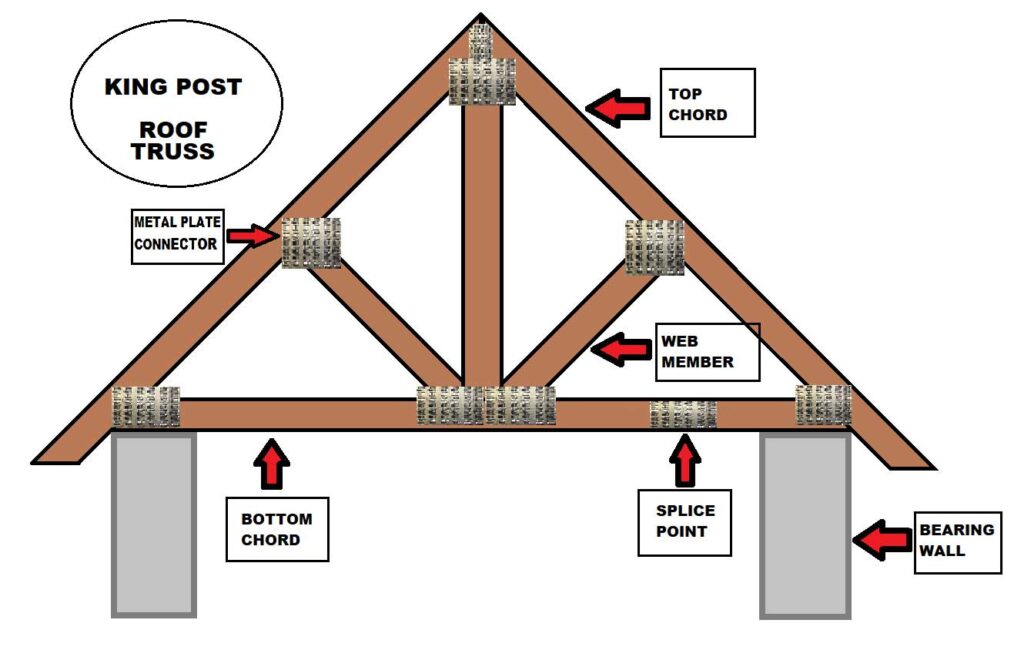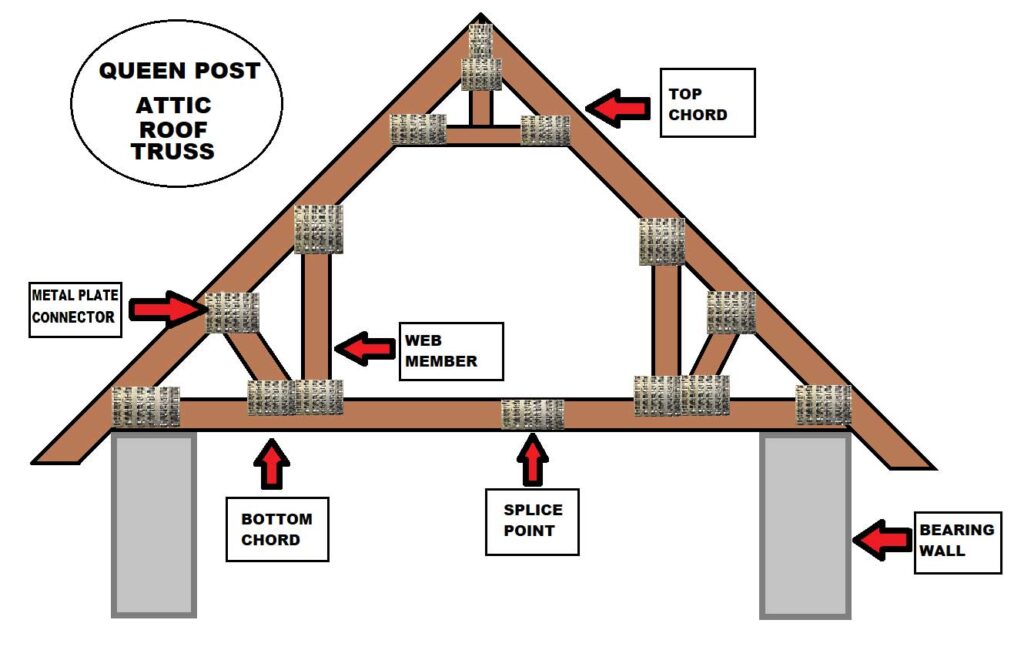As with high school football, firefighters ought to review their game footage to get a picture of what was going on during operations. Whether or not you agree with firefighters using video cameras during operations, video is a useful educational tool to play back conditions and view the building components in real time prior to catastrophe.
- Entering Through the Door, Falling Through the Floor: Catastrophic Structural Collapse
- How They Fail: Gusset Plates
- Construction Concerns: Truss Failure
- Lightweight Wood Trusses: More to Consider
If we look back to many of the collapses of lightweight materials in the past, we often see that many of them were the result of roof collapse. Lightweight wood roof trusses come in a multitude of designs, and depending on the design of the system, each will act differently during attack by fire. Let’s look at a fire back in 2018 in which a fire department experienced a collapse during an attic fire in a private dwelling. Watch the video a few times and take some time to yourself to analyze conditions. Consider what may have contributed to collapse in this situation. This is not a tactics talk…this is a building autopsy! Let’s take a look!
The Incident
At around 1900 hours on July 5, 2018, the North Las Vegas (NV) Fire Department responded to a structure fire within a private dwelling. Crews immediately became aware that the fire was in the attic space and addressed it appropriately. What was not evident immediately was the use of wood roof trusses. As we can see in the video, firefighters were in the garage space opening up the ceiling and were using a hoseline to knock the fire down. Shortly after their attack, we witness a collapse of the roof into the garage, missing the firefighters by mere feet.
How did this happen? Well first let’s discuss what we see. In the collapse still frames we see the bottom chord of the roof truss are intact, however they are disconnected. The metal plate connectors (gusset plates) are attached to either side of the bottom chord, however they are no longer attached to each other linearly. In some cases, the bottom chords of these trusses are not a single piece of wood, but instead are connected at a splice point with metal plate connectors. During a collapse, the load will take the path of least resistance. As in this case, the bottom chord is under tension—meaning that that it is essentially deflecting downward and trying at all times to be pulled apart under loading. This also precipitated the collapse of other trusses in the immediate area. The sole failure of a singular structural element within that truss precipitates system compromise. When we think of how tensile forces are acting on the bottom chord of a truss, think about taking dry spaghetti out of a box and holding it on each end. When you break it in half notice how as you deflect the bunch downward, each piece breaks, and ultimately you have complete severance. That is how tensile forces act upon the wood fibers.
Think outside the box. Did this occur solely due to fire? No. What lab tests often fail to replicate is the actual conditions faced in real buildings. In the video, you can see that there is suspended shelving on the inside of the “A” side of the garage. Also, note that the garage door is in the open position. Consider how the garage door is attached: the tracks are bolted to the underside of the bottom chord of the truss! Also consider: Does the bottom chord of that truss become loaded when the garage door is in the open or closed position? The answer is once the door is opened, it adds to the suspended loading of the truss. We often don’t consider this because the drywall gives us that false sense of security, as though what we can’t see won’t hurt us.
The members operating at this fire noticed a deflection or bowing of the ceiling and backed out just in time. The signs of collapse were there: deflection, bowing, gypsum falling, and yes…heavy fire attacking lightweight structural members.

The takeaway: Lightweight assemblies such as wood roof trusses are inherently unstable when attacked by fire. When sitting in your attic and left undisturbed, they hold up structurally. When attacked by fire, they weaken quickly. As seen in this video, the metal plate connectors obviously did not deflect the heat, did not protect the wood members, and released the bottom chord of the truss. This is because they are pressed into the wood ¾ of an inch; there is no real connection. The trusses we see in the video appear to be King Post (Figure 1), meaning they don’t provide livable or storage space. The Queen Post (Figure 2), also known as an attic truss, does. Imagine if there were a queen post truss and the attic space was loaded with all the occupant’s belongings? This would have added to both the fire load and live load. Remember also that water counts as a live load and impact load. 1,000 gpm will add four tons of water to a space in just over a minute. Can your attic space handle that load while under attack by fire?

Remember, check early and often for the use of lightweight materials. Communicate this to everyone on the fireground and especially if this area is attacked by fire. We know that truss systems provide an open space for fire to travel laterally. They provide no redundancy and can become overloaded by the failure of other trusses, which can in turn cause the failure of an entire system. Metal plate connectors can release at the panel point for any reason, and the truss provides no redundancy for the failure of any member within its apparatus. Address fire in the truss loft early. Be proactive in this. The North Las Vegas Fire Department wisely recognized it was not going well structurally and made a move to avoid the injury or death of their members.

SALVATORE ANCONA is a deputy chief fire instructor at the Nassau County (NY) Fire Service Academy; a lieutenant with the Seaford (NY) Fire Department; a fire inspector with the North Bellmore (NY) Fire Department; a former captain and training officer for the Bellmore (NY) Fire Department; and a former paramedic supervisor in New York City. He has a bachelor’s degree in fire and emergency services administration from John Jay College of Criminal Justice, an A.S. degree in fire science from Nassau Community College, and is attending Georgetown University for his masters in Emergency & Disaster Management. Ancona is the author of the building construction page “The Sons of Brannigan” on Facebook and was a recipient of the 2019 FDIC International Honeywell DuPont Scholarship.

